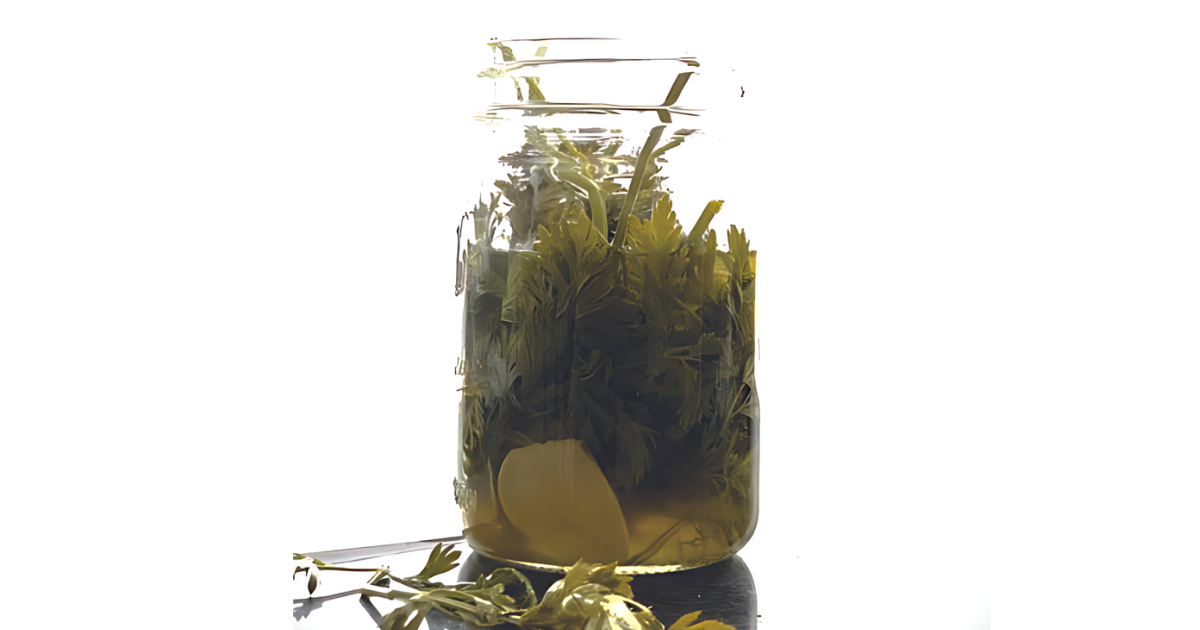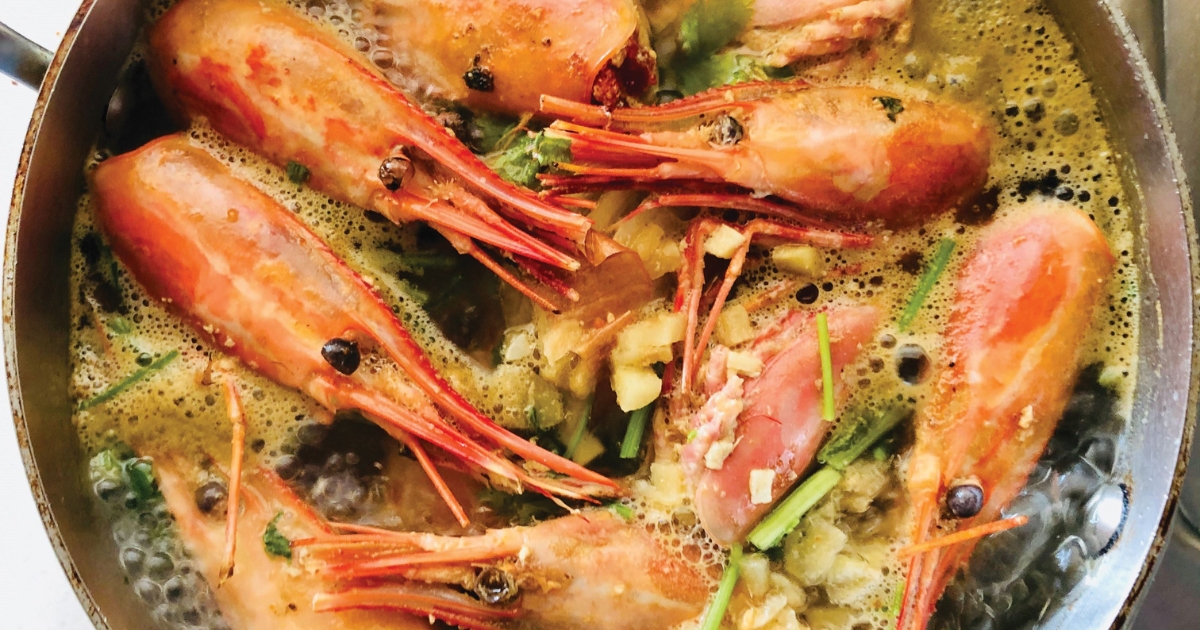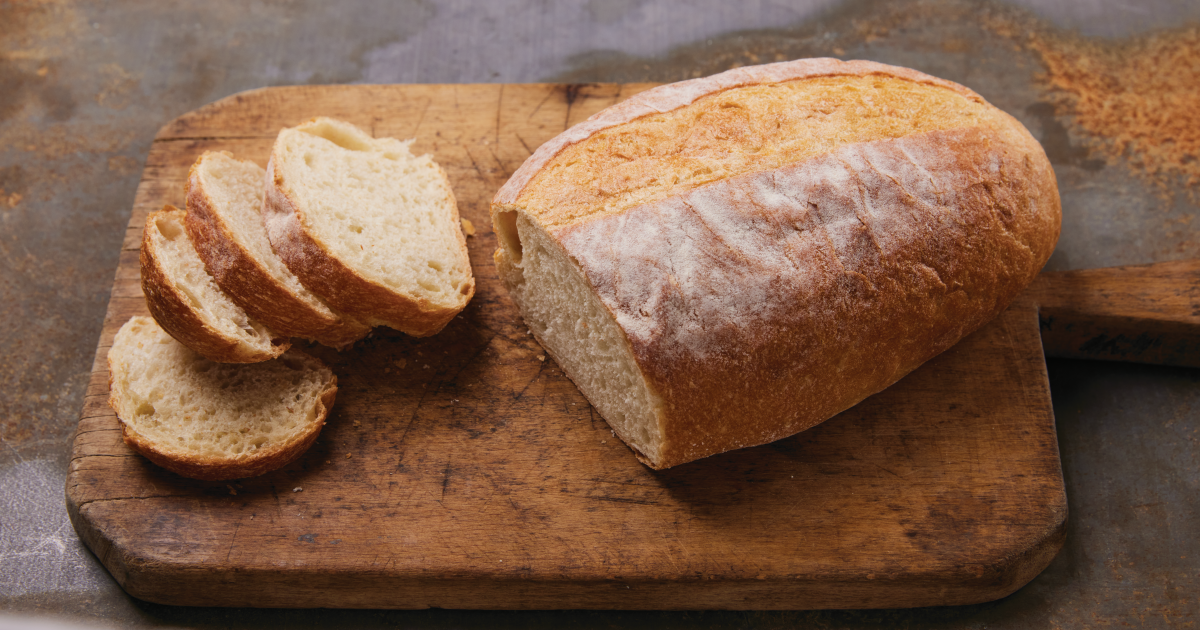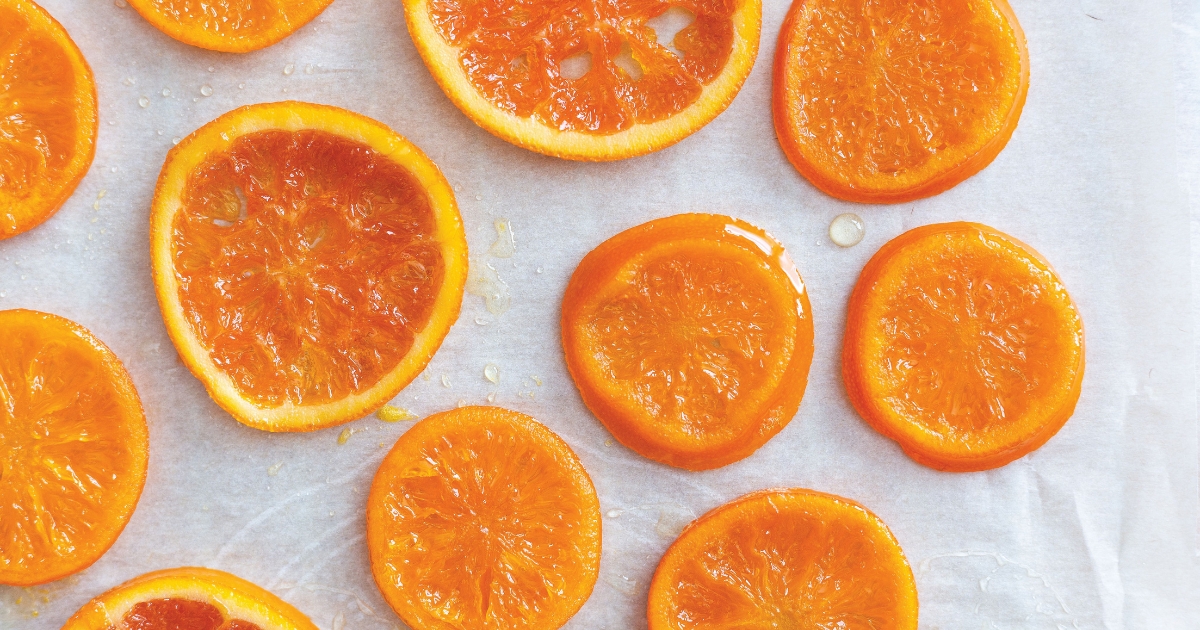Unless you’ve been hiding under a woolly blanket—which would be very hygge of you—we’re sure you’ve heard of this before. The word (pronounced hoog-uh) is Danish, and it’s the sort of word, like umami or terroir, that doesn’t translate neatly into one English word. It can be distilled, though, into a collection of emotions, activities and ways of being in the world. It’s about togetherness, breaking bread, lighting a fire, keeping warm and cozy, and buoying one another up through a long, dark, cold winter, Scandi-style.
For Nordic folks, it’s a wintertime way of life: an embracing of winter while at the same time creating a fuzzy shield against it by cooking up some venison stew over a campfire; going for a walk or playing in the snow; locking mittens and gathering together for a little much-needed camaraderie. OK, mittens are unlocked long enough to sip on warming glögg and nibble hearty, heart-warming foods. And while most of us don’t live as far north as our Scandinavian brethren, we aren’t so very different. We too endure some pretty challenging winters, lack of sunlight, and much of our geography, or terroir, is similar (our landscapes and waters offer up many of the same foods): wild and cultivated.
Along with keeping the cold and dark at bay, another vital aspect of surviving a northern winter, and of any hygge get-together, is a good supply of rich and filling food and drink. Start early. Gather as soon as the winter-weakened sun goes down, then take your time—spend all night—play games, chat, break out the old ABBA albums and share the most comforting of foods.
Here are four dishes and a festive drink to try this winter. Round out the spread with some lingonberry preserves, Scandinavian cheeses, Swedish meatballs, gravlax, gingersnaps and a shot or two of aquavit. Skål!
Herbed Finnish Egg Butter
This rich dish of still-warm hard-cooked eggs mashed with completely unreasonable amounts of butter, fresh dill and chives is a Finnish tradition. Spread it on dark rye or rye crisps as is, or with a few bits of smoked fish or radish sprouts on top. It’s perfect after an exhausting, calorie-burning day of cross-country skiing, snowshoeing, or poring over seed catalogues, dreaming of April.
Tip: Make this dish rustic or superfine and sophisticated. For a more homespun spread, simply mash as instructed, but for a delicate smoothness, blend the eggs, butter, salt and pepper in a food processor until creamy, then stir in the herbs.
Ingredients
- 8 free-run or pasture-raised room-temperature eggs
- 1/2 cup + 1 tbsp room-temperature butter
- 1/4 tsp sea salt, or more to taste
- 1/4 tsp freshly ground pepper, or more to taste
- 1/4 cup finely chopped fresh chives
- 1/4 cup finely chopped fresh dill
- Sprig dill

Method
- Add eggs to a saucepan of cold water to cover. Place over high heat and bring eggs to a boil. Once the water boils, remove the pot from the heat and set it aside to slowly cool.
- While eggs are resting in hot water, add butter to bowl.
- Add salt and pepper; set aside.
- When eggs are just cool enough to handle, peel and add to bowl of seasoned butter.
- Using potato masher, pastry cutter or fork, smash reserved butter and eggs together; the warmth of the eggs will further soften the butter, allowing it all to meld nicely.
- Once blended, add chives and dill, stir to combine, and taste for salt and pepper. Adjust seasoning if needed.
- Garnish with sprig of dill or more chives and a further sprinkling of pepper.
- Serve warm or at room temperature. Store any leftovers, covered in the refrigerator for up to 3 days; allow to come to room temperature before serving.
Makes about 2 to 2 1/2 cups.
Maple Sugar Cranberry Pulla
Pulla is a beautiful, braided, traditional, cardamom-scented Finnish bread. We’ve given it a festive, Canadian twist by adding dried cranberries and topping it with crunchy, sweet, pure maple flakes, though good old sugar will do if you can’t find maple sugar. Cardamom is a feature of Scandinavian cuisine; its subtle perfume flavours breads, cakes, pastries, meats and drinks. When shopping, look for green—not brown—cardamom, either whole pods or already ground.
Tip: Pulla freezes well as long as it’s wrapped up airtight. Fresh from the oven, it’s fantastic as is, but once frozen and thawed, sliced and toasted is the way to go or simply pop the foil-wrapped frozen loaf into a 350°F preheated oven for about 15 to 20 minutes.
Ingredients
- 1 1/3 cups lukewarm whole milk
- 2/3 cup sugar
- 1 tbsp ground green cardamom
- 2 tbsp dry active yeast (that’s 3 of those little 7-g packets)
- 3 free-run eggs, lightly beaten
- 6 to 7 cups all-purpose flour
- 5 tbsp room temperature butter, cut into 1/2-inch cubes
- 1 tsp kosher or sea salt
- 1 cup dried cranberries

Topping
- 1 tbsp 35% cream
- 1 free-run or pasture-raised egg
- 1 tsp ground cardamom
- 2 tbsp maple flakes or maple sugar, divided between both loaves
- 1/4 cup sliced almonds, divided between both loaves
Method
- Into the bowl of a stand mixer fitted with a regular paddle, add warm milk, sugar, cardamom and yeast. Blend well, about 30 seconds, then set aside, allowing yeast to activate, about 10 minutes or until mixture is foamy and smells yeasty.
- Add 3 lightly beaten eggs and mix until eggs are incorporated, about another few seconds.
- Switch out the regular paddle for a dough hook.
- With mixer on low speed, begin adding flour 1 cup at a time. After a few cups of flour have been added, add salt and continue to blend on low.
- After about 6 cups of the flour have been incorporated, a nice dough should form, but if it’s still too sticky, continue adding flour a few tbsp at a time until the dough becomes a nice elastic ball.
- When dough is a good consistency, increase speed to medium; knead for about 2 minutes, then start adding butter a few cubes at a time, making sure each addition of butter is mixed in before adding the next. You may have to stop from time to time, to pull the dough off the hook and scape down the sides of the bowl.
- Once the last few cubes of butter have been added, add the cranberries and, with the mixer still on low, continue to knead for 4 more minutes.
- Butter, oil or spray a large bowl; transfer dough from mixing bowl to greased bowl to rise. Cover with clean, damp tea towel, beeswax wrap or plastic wrap and place covered bowl somewhere warm and cozy—hygge for bread dough!—and allow it to proof for about 1 hour. Dough should double in size.
- Punch dough down, re-cover and allow it to rise again, about 30 minutes. Meanwhile, line 2 baking sheets with parchment paper; set aside.
- Preheat oven to 375°F.
- Dump risen dough out onto lightly floured work surface, then cut into 2 equal pieces. Working with 1 piece at a time, divide each piece into 3 equal pieces. There should be 6 equal pieces of dough altogether.
- With floured hands, roll each ball into a rope, about 15-inches long.
- Transfer 3 ropes to prepared baking sheet and lay them side by side. Starting at the top, press the tips together and tuck them under, then braid the ropes into a loaf; pinch and tuck the bottom end under, too. Some bread bakers start the braid in the middle and work up and down both ends. Whether you go simple or fancy with the braiding technique is up to you. Repeat with remaining 3 ropes on second prepared baking sheet.
- Cover both loaves with plastic wrap, beeswax wraps or clean, damp tea towels and set aside in a warm spot to rise once more; this time, about 20 minutes should do.
Topping: While loaves are rising on sheet pans, whisk together cream, 1 egg and ground cardamom in small bowl. Using pastry or basting brush, coat loaves and, while wet, sprinkle maple sugar and almonds overtop.
Bake 1 loaf at a time on the centre rack until golden, about 25 minutes. For an even bake, rotate it midway. When done, transfer to a rack and allow to cool for about 10 minutes before tearing into it!
Makes 2 irresistible loaves
Cedar-Poached Ontario Trout
We love Ontario freshwater fish. It’s sustainable, clean, delicious, healthy and buying it supports Canadian producers. Here, we’ve paired a rich, flavourful piece of coral-pink farmed Ontario rainbow trout with the bright, resinous, piney flavour of cedar (Thuja). Delicately poached in stock with fingerling potatoes and golden beets, it’s a simple and beautiful main course hot from the oven, but just as delightful served room temperature with a generous dollop of skyr—that’s thick Icelandic yogurt—sour cream or crème fraîche. This recipe serves two, but increasing it is easy: just add more potatoes and beets, and use a bigger piece of fish; the rest of the ingredients can stay the same.
Serves 2.
Tip: When harvesting the cedar, look for the greenest, most supple upper fronds, free from roadside nasties and doggy business.
Ingredients
- 1 approx. 12-oz (350 g) piece rainbow trout, skin on
- 2 tbsp butter
- 1 large or 2 small leeks, white and tender green parts, cut into coins, soaked in cold water, drained
- 8 baby, new or fingerling potatoes, scrubbed and quartered
- 1 large yellow beet, peeled, halved, cut into 1/4-inch slices
- Pinch sea salt, or more to taste (depends on saltiness of stock)
- 1/4 tsp pepper
- 1/4 cup medium-dry sherry
- 3 to 4 fresh, green cedar fronds, washed in cold water (enough to cover the fish)
- 2/3 cup fish, chicken or mushroom stock
- 1/3 cup chopped fresh chives
- 1/2 cup skyr, sour cream or crème fraîche
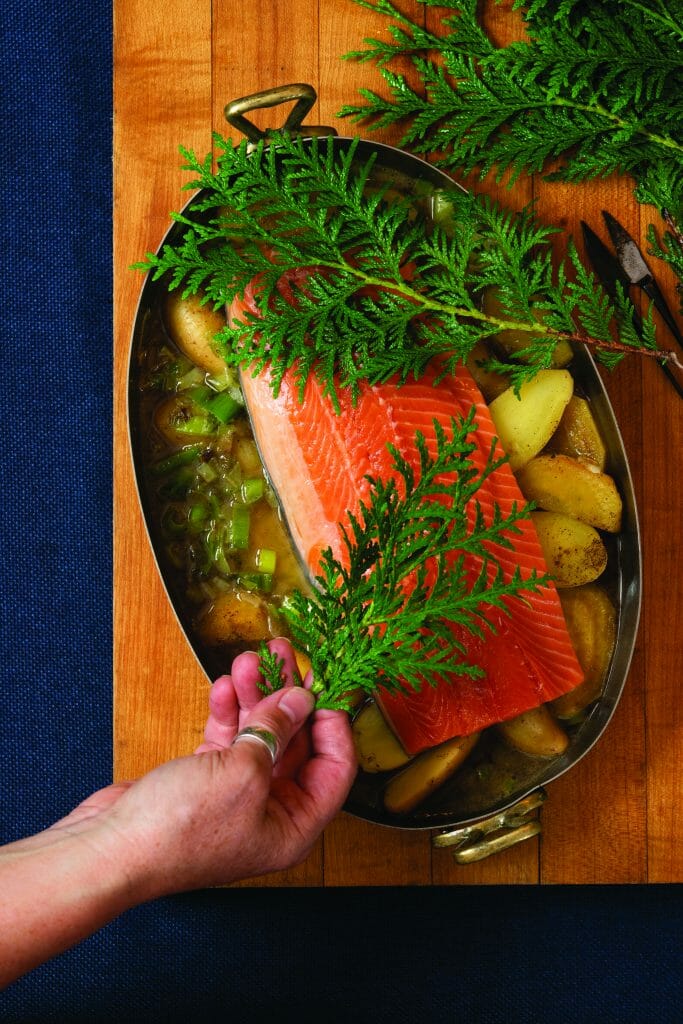
Method
- Preheat oven to 350ºF.
- Rinse the trout to remove any sliminess or stray scales; set aside.
- Into a high-sided cast-iron skillet, Dutch oven or roasting pan (somewhat bigger than the piece of fish), over medium heat, add butter and sliced leeks. Stir and fry until softened, about 4 to 5 minutes.
- Add potatoes, beets, salt and pepper; stir and continue to fry for 2 more minutes.
- Add sherry; stir, and arrange potatoes and beets fairly evenly over bottom of pan.
- Lay fish, skin side down, on top of potatoes and beets; lay washed cedar fronds over fish to cover, then pour stock over cedar and trout. Cover with lid or foil; bake until a paring knife can easily be inserted into a potato or beet and the fish flakes with a light tug, about 30 minutes.
- While fish is cooking, make chive skyr by simply adding chopped chives to yogurt or sour cream and stirring to combine.
- When the fish is done, feel free to bring the roasting pan to the table, or transfer it all to a serving platter and pour the broth into a jug or gravy boat to bring to the table for pouring over and smashing into the potatoes.

Scandi Ricotta Cake with Cardamom-Maple Roasted Plums and Raisins
This cake is super-easy to make—bake it right in a cast-iron skillet! Made with very little flour (it’s mostly eggs and ricotta), this confection is not quite New York cheesecake and not quite baked custard, but rather some devilishly good in-between thing. Make it gluten-free by switching out the all-purpose flour for your favourite gluten-free flour: rice, chickpea, corn or gluten-free baking blend. Traditionally, it’s made with vanilla extract, but we think the aroma of maple takes it to new Canadian heights.
Serves 6.
Tip: Be careful not to over-bake. When the time is up, even if the cake seems too wobbly, take it out. It will firm up as it cools. Some say it tastes better the second day, after a night, covered in the fridge. Also, if you’re not a fan of plums, many other fruits will do nicely: apples, cherries, peaches, apricots or pears.
Ingredients
- 2 1/4 cups full-fat ricotta cheese
- 1/4 cup sugar
- 1/4 cup all-purpose flour
- 1/2 cup almond flour (ground almonds)
- 1 cup 35% cream
- 2 tsp maple extract
- 4 free-run or pasture-raised eggs
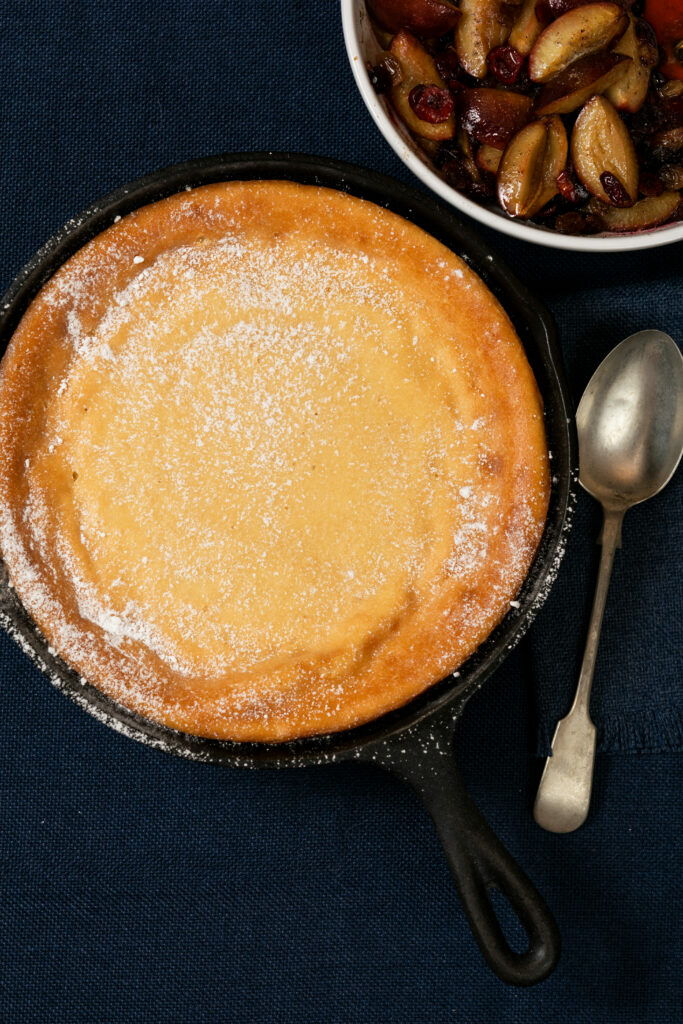
Cardamom-Maple Roasted Plums, Raisins and Cranberries
Ingredients
- 2 1/2 cups pitted and quartered plums (tart, firm varieties are best)
- 1/4 cup raisins
- 1/4 cup dried cranberries
- 2 tbsp butter
- 1/4 cup maple syrup
- 1 tbsp brandy (a fruit brandy is nice for this)
- 1 tsp ground green cardamom
Method
- Preheat oven to 350ºF.
- Butter the sides and bottom of baking dish or cast-iron skillet, in any shape, about 9-inches square or 9-inches across; set aside.
- Into bowl of food processor or stand mixer, blend ricotta, sugar, all-purpose flour, almond flour, cream, maple extract and eggs on high until smooth, about 1 to 2 minutes.
- Pour batter into buttered baking dish. Bake in oven on centre rack until edges are golden and somewhat puffy, about 45 minutes to 1 hour, depending on humidity and your oven. Maintain oven temperature.
Cardamom-Maple Roasted Plums, Raisins and Cranberries
- Lightly butter the bottom of a second baking dish just big enough to hold the fruit; add plums, raisins and cranberries. Top with butter, maple syrup, brandy and cardamom. Cover with a lid or foil and pop into the oven; roast until plums are just soft but not mushy, about 20 to 25 minutes.
- Allow the cake to cool slightly before serving with a generous helping of the Cardamom-Maple Roasted Plums, Raisins and Cranberries.We wouldn’t object to a scoop of vanilla ice cream or whipped cream, either.
Rosehip Sparkler
Nordic rosehip soup is a wintertime tradition, as is the tea made from steeping the fruit of the rose in hot water, but we think pairing rosehips with pink bubbles is more fun, celebratory and perfect for driving the winter blues away. Rosehips can be gathered in late fall or purchased dried whole, or chopped and dried as a loose-leaf or bagged tea; dried rose petals can be found at spice shops, fine-food shops or online. Rose syrup can be purchased at Middle Eastern grocers, gourmet shops or ordered online through wild-food purveyors.
Makes 5 cups of rosehip tea.
Tip: To make this drink non-alcoholic, replace the sparkling wine with sparkling soft cider or even ginger ale.
Ingredients
- 1/2 cup loose-leaf rosehip tea
- 6 cups boiling water
- 3/4 cup rose syrup, store-bought or homemade (see our Rose Simple Syrup recipe on opposite page)
- 1 bottle ice-cold pink sparkling wine
- Dried rose petals (optional)
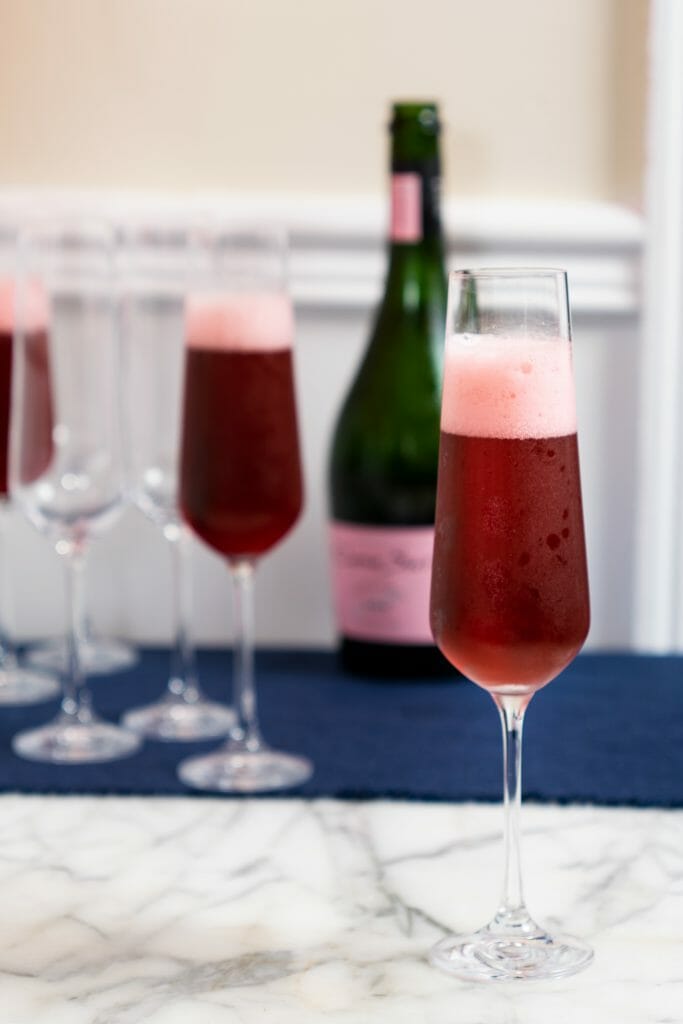
Method
- Start this the day before, by brewing up 6 cups of rosehip tea. Once steeped in the boiling water according to package directions (if using the boxed kind), place in fridge to chill; overnight is best.
- To chilled rosehip tea, add rose syrup; stir to blend.
- Fill flute glasses halfway with the tea mixture, then top up with ice-cold pink bubbly; float a few dried rose petals on top if desired. Or simply bring the flutes, a jug of the tea and the icy bottle of bubbly to the table and let folks pour their own to their own tastes.
Making Simple Syrup
Syrups, or simple syrups, as they are often called, are, well, simple to make, and really useful in the kitchen or behind the bar. With the basic unflavoured simple syrup there are three sweetness levels that call for three different sugar-to-water ratios: 1:1, 2:1 and even 3:1. For an all-purpose syrup, go with 1:1; it’s versatile and not too sweet. Simply heat equal amounts of water and sugar over medium heat until the sugar has dissolved. Transfer to a bottle while still very warm, cover and store in the pantry to use another day. Or, while the syrup is still warm, add your favourite herbs and allow to steep in the fridge for about 1 week, then strain through cheesecloth and re-bottle. For our Rose Simple Syrup, we used a three-way ratio of equal parts water, rose water and sugar. Adding some dried or fresh rose petals is a nice touch.
From Hudson, Quebec, now living in Port Hope, Ontario, Signe is a restaurant chef-turned-writer who tells award-winning stories and creates delicious recipes for LCBO’s Food & Drink, Manna Pro Hearty Homestead, The Harvest Commission, and Today’s Parent; she published her first book – Happy Hens & Fresh Eggs; Keeping Chickens in the Kitchen Garden with 100 Recipes – in 2015.









